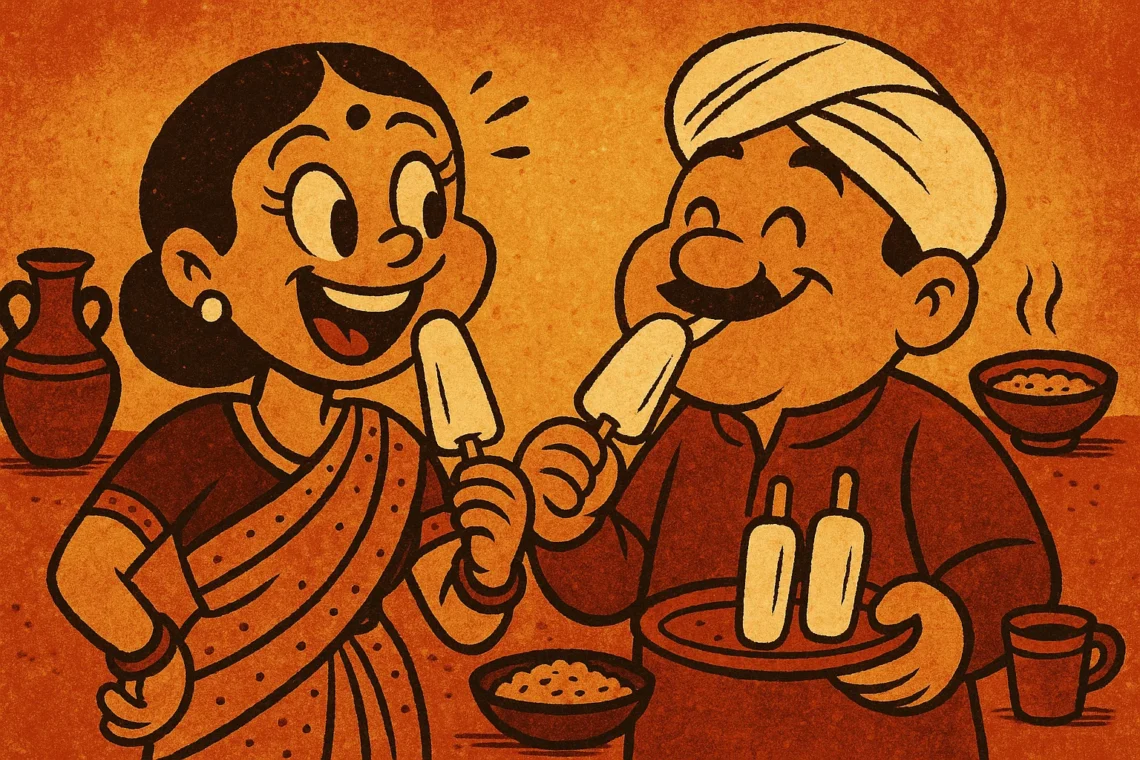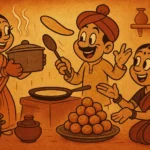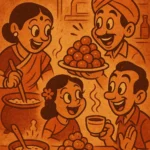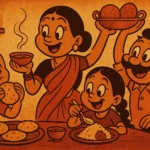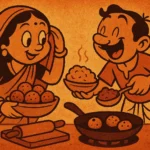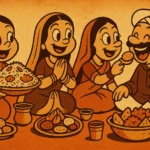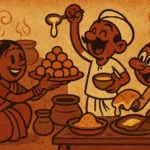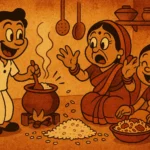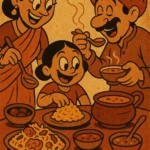It was just a bite. A small triangle of malai kulfi, balanced on a wooden stick, already melting at the corners in the Austin heat. I had picked it up from the freezer section of an Indian grocery store without thinking much — just one of those nostalgia-fueled decisions you make on autopilot while waiting for the cashier to finish chatting about cricket. But the moment it touched my tongue, I wasn’t in Texas anymore. I was on a plastic chair in a dusty courtyard in Mumbai, and it was 1997.
There are flavors that taste good. And then there are flavors that pull open a hidden drawer inside your memory, scattering summers and scooter rides and school vacations all over your senses. Kulfi does that for me. Especially the kind that tastes like it’s been boiled too long, thickened too far, and frozen in steel cones that someone once buried in a matka full of salt and ice. The kulfi of corner vendors, not dessert menus.
The First Kulfi Memory
I must have been eight. It was the last day of school. Report cards had been collected, summer holidays stretched ahead like a promise, and a kulfiwala had stationed himself just outside the gate — a genius of marketing and timing. For five rupees, he’d crack open the top of his tin, pull out a rock-solid cone, and ease it into your hand like he was handing over treasure. You’d lick, bite, suck the melted drops off your knuckles. No spoons. No napkins. Just cold cream and sugar, straight from the street to your bloodstream.
I remember how quiet I went while eating it. Not because I was shy, but because it demanded focus. The cold would hit your teeth and then your brain. The saffron and cardamom kicked in later, like a whisper. It wasn’t just a treat. It was theatre — the way it softened, the way the stick eventually came loose and threatened to betray you. My friend dropped his once and cried. I held mine tighter after that, like it was a final exam.
Kulfi as Time Travel
So when I bit into that kulfi decades later, surrounded by the hum of freezers and fluorescent lights, everything came rushing back. The taste wasn’t perfect. A little too smooth, not enough grain. But it was close. Close enough to collapse time. I was back in my childhood courtyard, where the floor was always warm, and the fan spun lazily while we ate silently to the sound of neighborhood kids playing cricket with a broken bat.
I remembered how my mother always had a towel ready to wipe sticky faces. How my father would steal the last bite of mine with a grin that made me pretend to be mad. How the kulfi always left a trail — on your shirt, on your hands, sometimes on your cheek if you were careless. A mark of joy, unapologetically messy.
More Than Dessert
These days, kulfi shows up dressed up — in earthen pots, topped with rose petals, or drizzled with rabri. That’s fine. Pretty, even. But I miss the rawness of the old one. The way it demanded nothing but a few rupees and some patience. The way it didn’t care about elegance. It just wanted to cool you down and shut you up for five minutes.
Sometimes, late at night, I open the freezer and cut off a small bite of kulfi — no plate, no stick. Just straight from the wrapper. And for a moment, I’m back in 1997, barefoot on the balcony, watching the sun go down while the kulfi melts faster than I can eat it. I don’t stop the drip. I don’t clean it up right away. I just let it be. Because it’s not about neatness. It’s about presence. It’s about remembering what summer tasted like before we grew up and started looking for cool in all the wrong places.
A bite of kulfi. And suddenly, it’s all there again. The sweat, the sugar, the silence, the sun. 1997, with all its sticky joy.
Born in Mumbai, now stir-frying feelings in Texas. Writes about food, memory, and the messy magic in between — mostly to stay hungry, sometimes just to stay sane.

